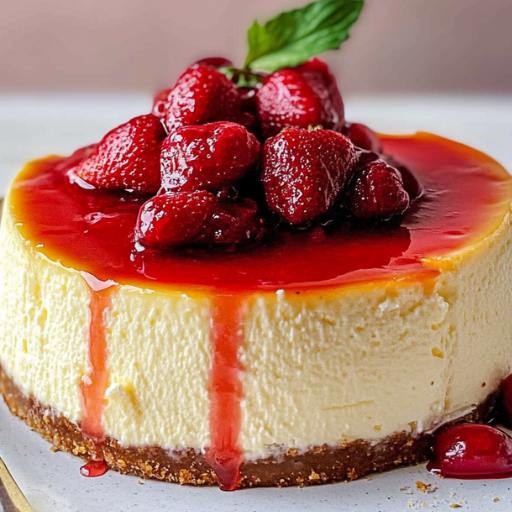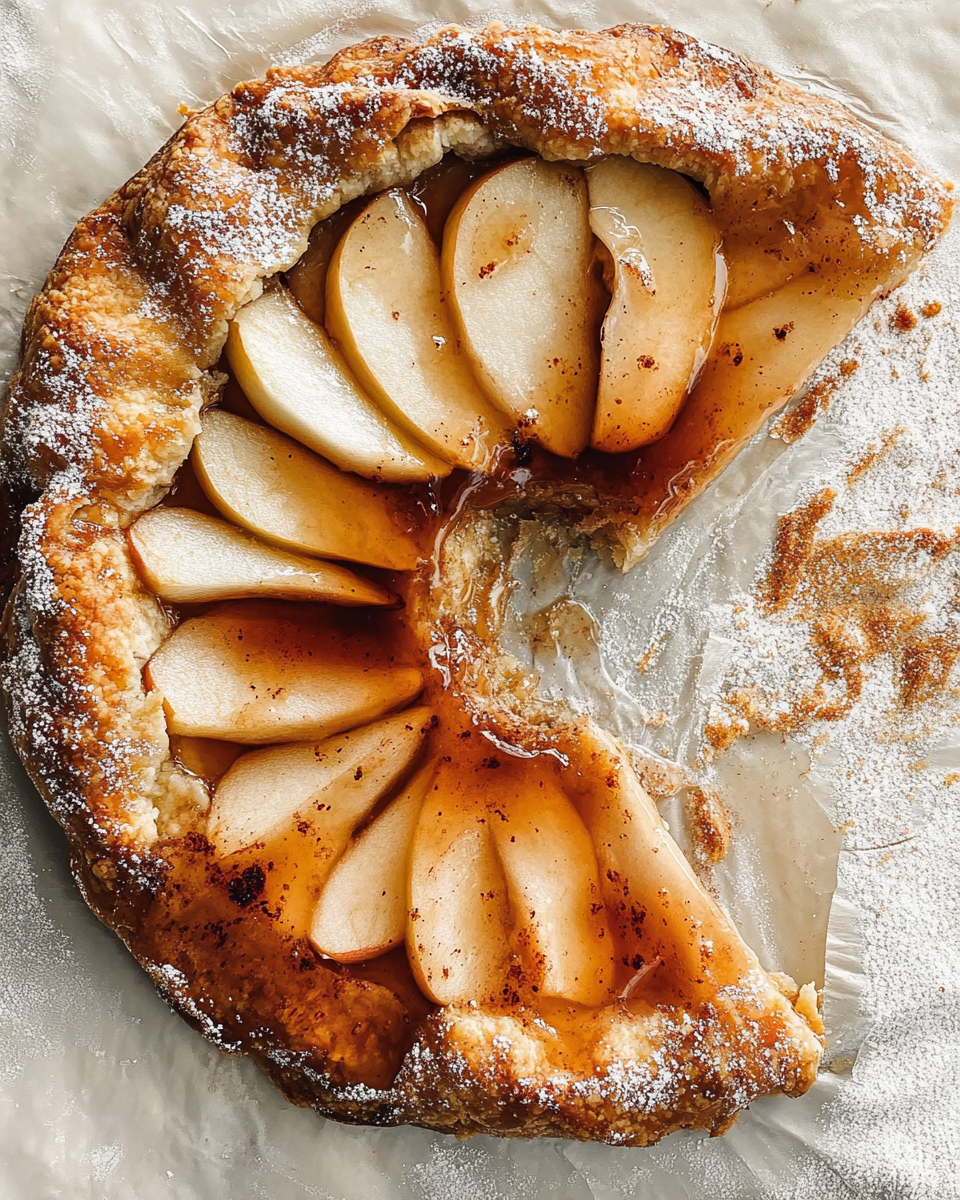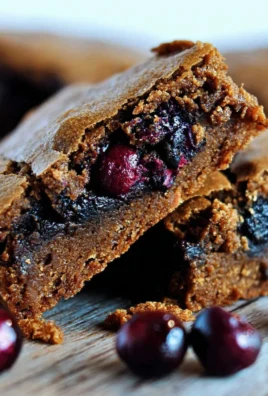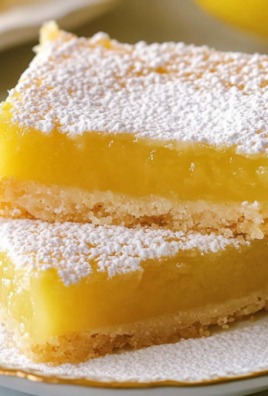
There’s something undeniably iconic about a Classic New York Cheesecake. With its ultra-creamy texture, rich and tangy flavor, and that perfect buttery graham cracker crust, this dessert has earned its place as a staple in American cuisine. Whether it’s for a celebration, dinner party, or a weekend treat, the New York Cheesecake delivers indulgence like no other. This guide will walk you through its origins, why it stands apart from other cheesecake varieties, and exactly how to recreate it flawlessly at home.
Overview of Classic New York Cheesecake
Classic New York Cheesecake is known for its dense, smooth, and creamy texture. Unlike lighter versions such as the Philadelphia or Japanese cheesecake, New York-style cheesecake includes extra egg yolks and full-fat cream cheese, often paired with sour cream or heavy cream to achieve its signature richness. The baking method is equally important; it typically involves a water bath to prevent cracking and overbaking.
Cheesecake as a concept dates back to ancient Greece, but it was New York that transformed it into the rich, creamy dessert we know today. Bakeries like Junior’s and Lindy’s made it famous, and it’s now a beloved dessert across the globe.
Brief History and Cultural Significance
Cheesecake has an ancient legacy, with variations appearing in Greek, Roman, and medieval European cuisines. But the modern iteration of the Classic New York Cheesecake began to take shape in the early 1900s. Legend attributes the creation to Arnold Reuben, a New York restaurateur who added cream cheese to a cheesecake recipe—setting the stage for a culinary revolution.
The cake gained traction during the post-war period when it became a popular item in delis and bakeries. New York’s rich immigrant culture played a major role in its popularity, with Eastern European baking traditions influencing its development. Today, it’s more than just a dessert—it’s a symbol of comfort and celebration, appearing in cookbooks, food shows, and special occasions nationwide.
Preparation Phase & Tools to Use
Prep Time
-
20 minutes
Cook Time
-
1 hour 30 minutes
Cool Time
-
6 hours (including overnight chilling)
Total Time
-
8 hours minimum
Servings
-
12 slices
Yield
-
One 9-inch cheesecake
Essential Tools and Equipment
-
9-inch springform pan: Ensures easy release without damaging the crust.
-
Electric hand mixer or stand mixer: Needed for achieving a smooth batter without overmixing.
-
Large mixing bowls: To combine crust and batter ingredients separately.
-
Roasting pan: Used for the water bath.
-
Heavy-duty aluminum foil: To wrap the springform pan and prevent water leaks.
-
Rubber spatula: For scraping down the bowl and smoothing the top.
-
Parchment paper: Helps with easy removal from the base.
-
Cooling rack: Essential for gradual cooling post-baking.
Importance of Each Tool
Each tool plays a vital role in ensuring your Classic New York Cheesecake comes out perfectly:
-
The springform pan allows for easy removal without disturbing the delicate structure.
-
The mixer ensures smooth incorporation of ingredients without introducing air bubbles.
-
The water bath regulates oven heat and prevents cracking.
-
The foil and parchment safeguard against water seepage and sticking.
Preparation Tips
-
Room Temperature Ingredients: Always bring cream cheese, eggs, and sour cream to room temperature for smooth blending.
-
Mix Low and Slow: Overmixing can incorporate too much air, leading to cracks. Use a slow speed and avoid over-beating.
-
Avoid Skipping the Water Bath: It may seem like extra effort, but it’s critical for even baking and avoiding cracks.
-
Don’t Open the Oven: Keep the door closed while baking to maintain a stable temperature.
-
Gradual Cooling: Let the cheesecake cool in the oven with the door cracked for an hour before transferring to the fridge. This prevents sudden temperature changes that can cause sinking or cracking.
Ingredients List (with Measurements)
Crust
-
2 cups graham cracker crumbs
-
1/3 cup granulated sugar
-
1/2 cup unsalted butter, melted
Filling
-
4 (8-ounce) packages full-fat cream cheese (room temperature)
-
1 1/4 cups granulated sugar
-
1 tablespoon cornstarch (or 2 tablespoons all-purpose flour)
-
4 large eggs
-
1 large egg yolk
-
1 cup sour cream (room temperature)
-
1 tablespoon lemon juice
-
2 teaspoons vanilla extract
-
1/4 teaspoon salt
Optional Topping
-
1/2 cup sour cream
-
2 tablespoons powdered sugar
-
1/2 teaspoon vanilla extract
Step-by-Step Instructions
-
Preheat Oven: Set your oven to 325°F (160°C). Position the rack in the lower-middle section.
-
Prepare the Pan: Line the bottom of a 9-inch springform pan with parchment paper. Wrap the outside tightly with heavy-duty foil to prevent water leaks.
-
Make the Crust: In a mixing bowl, combine graham cracker crumbs and sugar. Pour in melted butter and stir until the mixture resembles wet sand. Press evenly into the bottom of the pan. Bake for 10 minutes, then set aside to cool.
-
Mix the Cream Cheese: Beat the cream cheese on medium-low speed until smooth and creamy. Scrape down the sides often.
-
Add Sugar and Starch: Gradually add the sugar and cornstarch, continuing to beat until the mixture is light and fluffy.
-
Incorporate Eggs: Add eggs one at a time, mixing just until incorporated. Add the egg yolk last.
-
Add Remaining Ingredients: Stir in the sour cream, lemon juice, vanilla extract, and salt. Mix on low speed until fully combined and smooth.
-
Pour into Pan: Pour the filling over the cooled crust. Tap the pan lightly on the counter to release any trapped air bubbles.
-
Prepare Water Bath: Place the springform pan in a large roasting pan. Pour hot water into the roasting pan until it reaches halfway up the sides of the springform.
-
Bake: Bake at 325°F for 1 hour and 20–30 minutes, or until the edges are set but the center jiggles slightly.
-
Cool Gradually: Turn off the oven, crack the door open, and let the cheesecake cool in the oven for one hour.
-
Chill Overnight: Remove from the oven and cool to room temperature. Cover and refrigerate for at least 6 hours or overnight.
-
Optional Topping: Mix sour cream, powdered sugar, and vanilla. Spread over the top before serving.
-
Serve: Slice with a sharp knife cleaned between cuts for best presentation.
Side Dish Recommendations
A perfectly baked Classic New York Cheesecake can stand on its own, but pairing it with complementary sides elevates the experience. Below are eight side dish ideas that balance the dessert’s rich, creamy profile with texture, acidity, or contrast in flavor.
Fresh Berry Compote
A tangy berry compote made from raspberries, blueberries, or blackberries complements the cheesecake’s richness. Simmer fresh or frozen berries with a bit of sugar and lemon juice until syrupy. Serve chilled or warm over the cheesecake for a colorful, fruity finish.
Homemade Whipped Cream
Fresh whipped cream adds an airy lightness. Whip heavy cream with powdered sugar and vanilla extract until soft peaks form. For variation, add a touch of cinnamon or almond extract. Serve dolloped over each slice for a luscious bite.
Salted Caramel Sauce
Drizzle a warm salted caramel sauce to introduce buttery depth with a hint of saltiness. The contrast enhances the sweet, tangy flavor of the cheesecake. Make it from scratch with butter, brown sugar, cream, and a touch of sea salt.
Chocolate Ganache Drizzle
Melted dark chocolate mixed with cream creates a silky ganache that pairs elegantly with the vanilla-scented cheesecake base. Serve warm for a molten texture or chilled for a firmer, rich topping.
Lemon Curd
A spoonful of tart lemon curd provides brightness and acidity, cutting through the cheesecake’s creaminess. It pairs exceptionally well with the hint of lemon in the batter.
Espresso Sauce
Coffee and cheesecake are natural companions. An espresso sauce made with brewed coffee, brown sugar, and a dash of cocoa enhances the dessert’s depth and adds an adult sophistication.
Fruit Coulis
A smooth fruit purée—like mango, passionfruit, or raspberry—offers a vibrant, sweet-tart finish. Use strained fruit for a glossy coulis that doesn’t overpower the cake.
Candied Nuts and Crunch
A sprinkle of toasted pecans, walnuts, or almonds, especially when candied with sugar and cinnamon, adds crunch and a nutty contrast. It brings texture and earthiness to each bite.
Nutritional Information & Health Benefits
Understanding the nutrition behind Classic New York Cheesecake helps you make informed choices while savoring each indulgent bite.
Estimated Nutrition Per Slice (based on 12 servings)
-
Calories: 480–520
-
Total Fat: 35–40g
-
Saturated Fat: 18–20g
-
Unsaturated Fat: 10–12g
-
Trans Fat: 0–1g
-
-
Cholesterol: 160–180mg
-
Sodium: 250–300mg
-
Total Carbohydrates: 35–40g
-
Sugar: 28–32g
-
Fiber: 0.5–1g
-
-
Protein: 7–9g
Health Benefits
While cheesecake is a rich dessert, it does offer some nutritional value when enjoyed in moderation:
-
High Calcium Content: From cream cheese and sour cream, supporting bone health.
-
Protein: Eggs and dairy contribute to a moderate protein boost per serving.
-
Energy Source: High-calorie content makes it suitable for high-energy needs.
Customization for Healthier Options
To reduce calories or adapt to dietary needs, consider:
-
Using reduced-fat or whipped cream cheese.
-
Substituting Greek yogurt for sour cream.
-
Replacing the sugar with erythritol or another sugar substitute.
-
Using a nut-based or oat crust for a gluten-free alternative.
-
Making mini cheesecakes for built-in portion control.
Keep in mind that altering ingredients may slightly affect the texture and flavor, so adjustments should be tested in small batches.
Common Mistakes to Avoid & How to Perfect the Recipe
Even experienced bakers can encounter issues with cheesecake. Here are common problems and practical solutions to avoid them.
Cracking on the Surface
Cause: Overbaking, sudden temperature change, or overmixing.
Fix:
-
Use a water bath to maintain even baking temperature.
-
Do not open the oven during baking.
-
Let the cheesecake cool gradually in the oven with the door cracked open.
-
Avoid overbeating the batter—especially after adding eggs.
Soggy Crust
Cause: Water from the water bath leaking into the springform pan.
Fix:
-
Wrap the pan tightly in multiple layers of heavy-duty foil.
-
Use a silicone wrap or bake the cheesecake inside a slightly larger cake pan to prevent direct water contact.
Dense or Overly Firm Texture
Cause: Too much mixing, incorrect baking temperature, or skipping the resting phase.
Fix:
-
Mix only until ingredients are combined and smooth.
-
Bake slowly at a consistent temperature.
-
Always chill for at least 6 hours or overnight to let the texture develop properly.
Lumpy Batter
Cause: Cold cream cheese or eggs.
Fix:
-
Bring all ingredients to room temperature before mixing.
-
Scrape down the bowl frequently to ensure even blending.
Uneven Browning or Burnt Top
Cause: Oven hot spots or placing cheesecake too high in the oven.
Fix:
-
Position the rack in the lower middle of the oven.
-
Consider tenting the top with foil midway if the top darkens too quickly.
Sour Flavor Overpowering
Cause: Too much sour cream or lemon juice.
Fix:
-
Use only the recommended measurements.
-
Balance the sour cream with enough sugar and vanilla to smooth out the flavor.
Mastering the Classic New York Cheesecake takes patience, precision, and practice. But when done right, the result is a stunning, showstopping dessert that impresses every time.
Pro Tips and Expert Notes
Perfecting Classic New York Cheesecake goes beyond the basics. Here are several advanced techniques and helpful notes to ensure the best possible outcome every time you bake.
Bake Low and Slow
Baking at a lower temperature, such as 325°F, allows the filling to cook evenly and prevents the surface from browning too quickly. Patience is crucial; rushing this process risks a dry or cracked center.
Room Temperature Ingredients Are Non-Negotiable
Cold ingredients lead to a lumpy batter and uneven baking. Take the time to let the cream cheese, eggs, and sour cream fully come to room temperature before beginning.
Scrape the Bowl Often
Use a flexible spatula to scrape down the sides of the bowl during mixing. This ensures all ingredients are incorporated without overmixing, which can introduce air bubbles that lead to cracks.
Let It Set Overnight
Chilling the cheesecake for at least 6–8 hours, preferably overnight, is essential. This resting time improves both flavor and texture, allowing the cheesecake to firm up beautifully.
Sharp Knife for Clean Cuts
Run a long, sharp knife under hot water and wipe it dry before each slice. This simple habit delivers clean, professional-looking servings.
Storing and Reheating
Refrigeration
Once cooled, store the cheesecake in the springform pan, loosely covered with plastic wrap or foil. It will last up to 5 days in the refrigerator. For best results, let it sit at room temperature for 20 minutes before serving.
Freezing
To freeze:
- Chill the cheesecake completely first.
- Remove it from the pan and wrap it tightly in plastic wrap, then in foil.
- Place in a freezer-safe container or bag.
Frozen cheesecake can be stored for up to 2 months. Thaw overnight in the refrigerator before serving.
Reheating Slices (Optional)
Though cheesecake is best served cold, individual slices can be lightly warmed in the microwave for 10–15 seconds if a warm center is desired. Avoid overdoing it to prevent a rubbery texture.
FAQs: Classic New York Cheesecake
Why did my cheesecake crack?
Cracking is often due to overmixing, sudden temperature changes, or skipping the water bath. Stick to slow mixing and gradual cooling to prevent it.
Can I make it gluten-free?
Yes, simply use gluten-free graham crackers or crushed almonds for the crust. The filling is naturally gluten-free.
What’s the best cream cheese to use?
Use full-fat blocks of cream cheese, not whipped or spreadable types. Brands like Philadelphia are commonly preferred for their smooth, rich texture.
How can I make it more tangy?
Increase the sour cream slightly or add a touch more lemon juice. Always balance these additions with sweetness to maintain harmony.
Can I bake without a water bath?
You can, but it increases the risk of cracking and uneven baking. If avoiding the water bath, bake at a lower temperature and monitor closely.
How do I know it’s done baking?
The edges should be set, and the center should jiggle slightly like gelatin. If it’s firm throughout, it may be overbaked.
What toppings work best?
Fresh berries, whipped cream, caramel, chocolate ganache, or lemon curd are all popular options. Each adds flavor contrast and visual appeal.
Can I use a different pan size?
You can use a 10-inch pan for a thinner cheesecake or make mini versions using cupcake tins. Adjust baking time accordingly.
How do I transport it safely?
Keep it in the springform pan, wrap securely, and chill well before travel. Place on a firm tray to prevent shifting.
What makes it “New York” style?
Extra egg yolks, full-fat cream cheese, and a dense, creamy texture distinguish New York style from other varieties like Philadelphia or no-bake cheesecakes.
Conclusion
Classic New York Cheesecake isn’t just dessert—it’s a celebration of indulgence, texture, and culinary tradition. From its iconic creamy filling to its buttery graham cracker crust, every bite delivers the perfect balance of tangy, sweet, and smooth.
With the guidance in this three-part series, from the cultural roots to troubleshooting techniques, you now have every tool needed to master this timeless recipe. Whether you’re making it for the first time or refining your technique, the satisfaction of slicing into a flawless cheesecake is unmatched.




Leave a Comment